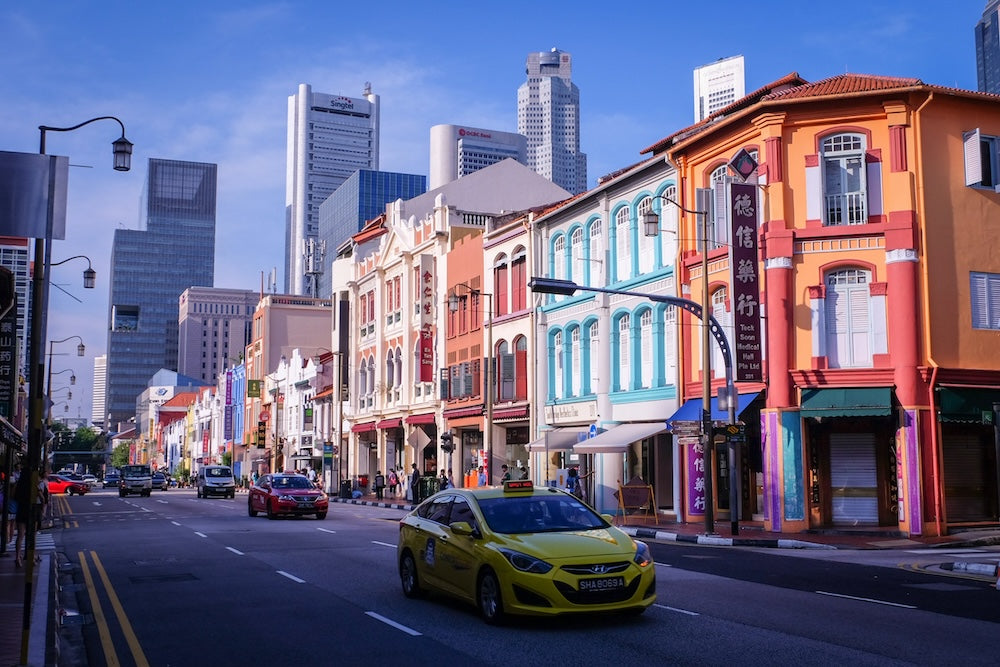Big news for businesses.
Singapore’s Ministry of Manpower (MOM) is making significant updates to the Work Permit framework.
These changes will take effect on July 1, 2025.
So, what can you expect?
The changes aim to help businesses hire skilled foreign workers while keeping Singapore an attractive place to work.
Let’s break down what’s changing and how it could impact your hiring plans.
Table of Content
Key Updates for Employers: Singapore's New Rules for Work Permits
1. No More Employment Duration Limits

Currently, Work Permit holders can be employed in Singapore for a maximum of 14 to 26 years, depending on their skill level, sector and country of origin.
Starting July 1, 2025, this cap will be removed. As long as workers meet the eligibility criteria, they can remain employed.
Why does this matter? Businesses will get more stability, reducing the need for constant hiring and training.
Just be sure to check the eligibility criteria before applying for a Work Permit!
For sectors like manufacturing, construction, and F&B - where experience is vital - this is great news.
Keeping skilled workers longer means smoother operations and fewer disruptions.
2. Higher Maximum Employment Age

The maximum employment age for Work Permit holders is rising from 60 to 63 years.
For new applicants, the age limit will now be 61 years. This is a big jump from the current age limit of 50 for non-Malaysians and 58 for Malaysians.
This change gives businesses the ability to keep experienced employees longer. It’s a positive shift, but it’s important to consider other factors, like healthcare costs.
Also, think about how you may need to adjust work processes to accommodate an aging workforce.
You Might Also Like
→ Looking to apply for a Work Permit? We’re here to make the process simple for you at Trinity Pass.
→ Still deciding between an S Pass and Employment Pass? Check out our guide to help you make the best choice.
3. More Countries to Hire From
Starting June 1, 2025, employers can hire workers from Bhutan, Cambodia, and Laos.
This expands the hiring pool for businesses facing manpower shortages.
Bhutanese workers, in particular, are expected to be a good fit for customer-facing roles due to their higher English proficiency.
Industries like hospitality, aviation services, and logistics will benefit most from this expansion.

4. More Jobs on the NTS Work Permit Occupation List
Starting September 1, 2025, more job roles will be added to the Non-Traditional Source (NTS) Occupation List. This will make it easier to hire workers for specific positions. Some new roles include:
✅ Cooks (replacing ‘Cooks in Indian restaurants’)
✅ Heavy vehicle drivers (Class 4 and 5 licence holders)
✅ Manufacturing operators
The F&B, logistics, and manufacturing industries will gain from these updates. These sectors will have a wider talent pool, making recruitment smoother.
What MOM’s New Rules for Work Permits Mean for Your Business
These updates bring some real advantages to employers:
✅ Lower Workforce Turnover – Keeping experienced workers longer means less time spent on hiring and training.
✅ More Hiring Flexibility – More countries and job roles to choose from means wider recruitment options.
✅ Better Workforce Stability – Aligning employment age limits with Singapore’s retirement policies makes long-term staffing easier to plan for.
That said, there are a few things to keep in mind:
⚠️ Higher Healthcare Costs – With workers staying longer, businesses may face increased healthcare expenses.
⚠️ Quota & Levy Requirements – These will remain in place, so hiring flexibility is still subject to regulations.
How to Prepare

With these changes coming soon, now’s the time to reassess your hiring strategy:
✔ Assess Your Workforce Needs – Consider how the expanded source countries and job lists can help you fill key roles.
✔ Plan for Retention – Focus on supporting experienced workers with training and career growth.
✔ Stay Updated – Keep up with MOM guidelines to ensure you’re aligned with the new rules.
The updated Work Permit framework is designed to help businesses build a stable and skilled workforce while supporting Singapore’s long-term economic growth. By preparing ahead, you’ll be in a great position to take full advantage of these changes.
Wrapping Up: Singapore's New Work Permit Rules
With the new updates to Singapore’s Work Permit framework, businesses have a great opportunity to build a more stable and skilled workforce.
The changes, such as lifting the employment duration limits, raising the maximum employment age, and expanding the hiring pool, give employers more flexibility. These updates will help ease manpower challenges.
There are a few things to keep in mind, such as managing healthcare costs and meeting quota and levy requirements. However, these updates make it easier to retain experienced workers and improve long-term staffing plans.
By preparing now, you’ll be ready to make the most of these changes and strengthen your workforce.
Oh, and if you’re considering upgrading a reliable worker, here’s a helpful guide on how to convert a Work Permit to an S Pass.
Got questions about how these changes could affect your hiring? Reach out to us anytime—we’re happy to help!



Share:
How to Pay the Maid Levy in Singapore: A Step-by-Step Guide
How to Apply an S Pass from a Work Permit: A Complete Guide for 2025